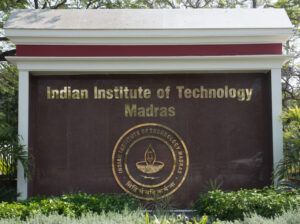OAKLAND, CALIF. & GURUGRAM, INDIA : Blue Sky Analytics released groundbreaking new data on emissions from biomass fires as part of the world’s first comprehensive accounting of global greenhouse gas (GHG) emissions based primarily on direct, independent observation with the Climate TRACE coalition.
Founded by Ms. Abhilasha Purwar, a Yale and IIT alum and Mr. Kshitij Purwar, college dropout and self-taught developer, Blue Sky Analytics analyses satellite data to deliver high resolution insights on environmental indicators.
Blue Sky Analytics’ data reveals new insights into recent trends in biomass fires, including emissions from forest and crop residue fires in India. For example, the data verifies the downward trend in crop fires being observed between 2016-19 citing a reduction in GHG emissions due to cropland fires by 11.39 per cent during the three years. However, it also points to an increase in emissions by 12.8 per cent during the year 2019-20, increasing India’s global contribution to 12.2 per cent.
Climate TRACE, led by Al Gore, is a global coalition with a mission to accelerate climate action by providing independent high resolution and near-real-time (GHG) emissions data. Climate TRACE’s innovative approach fills critical knowledge gaps for all countries that rely on the patchwork system of self-reporting that currently serves as the basis for most existing emissions inventories.
To produce these insights, the Climate TRACE coalition harnessed AI and machine learning to analyze over 59 trillion bytes of data from more than 300 satellites, more than 11,100 sensors, and numerous additional sources of emissions information from all over the world. This unprecedented effort provides a significant step forward in emissions monitoring, transforming a system that previously relied on rough estimates, opaque methods, and inaccessible reporting.
Highlighting Blue Sky’s contribution to the coalition, Ms. Abhilasha Purwar, Founder and CEO Blue Sky Analytics, said, “For effective climate action it is essential to have an independent, system level view of emissions. This is especially critical for sources like fires, which are rapidly increasing in frequency and scale but whose emissions are still poorly tracked and accounted for in most multi-sector inventories. We are proud to contribute to a collaborative effort like Climate TRACE that endeavors to bring this kind of visibility to all major global emissions sources”
The emissions estimates from Blue Sky Analytics cover both fires caused by human activities (e.g. burning in forest areas for conversion to agricultural land or of crop residues) and wildfire activity, producing a comprehensive picture of fire emissions. By combining multiple satellite data sources for active fire identification and characteristics with higher resolution global land cover maps, these estimates supplement existing country-level reporting methods, which rely primarily on seasonal estimations and ground measurements of burned area.
Driven by satellites, remote sensing, and machine learning, the inventory is particularly relevant to the more than 100 countries that lack access to comprehensive emissions data from the past five years. In practice, this means that heading into climate negotiations at COP26 in Glasgow, world leaders of every country can inform their decisions with data that reflects current emissions trends, rather than trends prior to the creation of the Paris Agreement.
The inventory, which spans the years 2015–2020, reveals striking insights about recent emissions trends across 10 sectors and 38 subsectors of the global economy.
“For far too long, climate action has been hindered by a lack of independent, verifiable data on emissions. Climate TRACE is built on the notion that we can only manage what we can measure,” explained former U.S. vice president and Climate TRACE coalition convening member Al Gore. “We are helping to create a level playing field for everyone who wants to take an active role in reducing emissions—from government ministers and regulators to investors and business leaders, to journalists and citizen activists. This new era of radical transparency will put everything out into the open.”
“Big Data, artificial intelligence, and satellites are shaping people’s lives in so many ways, from shopping to smart home assistants to navigation. Now we’re all applying this technology’s potential to one of the most important issues of our time: the climate crisis,” said Gavin McCormick, executive director of coalition convening member WattTime. “We’ve established a shared, open monitoring system capable of detecting essentially all forms of humanity’s greenhouse gas emissions. This is a transformative step forward that puts timely information at the fingertips of all those who seek to drive significant emissions reductions on our path to net-zero.”
The Climate TRACE approach also means that emissions information is more timely than ever before. Historically, because many emissions inventories largely rely on self-reported data, they have taken years to assemble, complicating efforts to know if decarbonization policies are working. Climate TRACE is built to identify emissions quickly and accurately. This first data release is already a massive improvement over the status-quo, providing timely comprehensive data through the end of 2020 and including information at the detailed industry level for subsectors that were not previously available in most countries.
The technology infrastructure behind Climate TRACE also means that latest data will be available sooner than other inventories. Over time, the granularity of TRACE data will improve to provide the global community with the ability to view emissions from specific sources like power plants, airports, forests, and countless other assets all over the world, and to “see” emissions fluctuations week-by-week.








